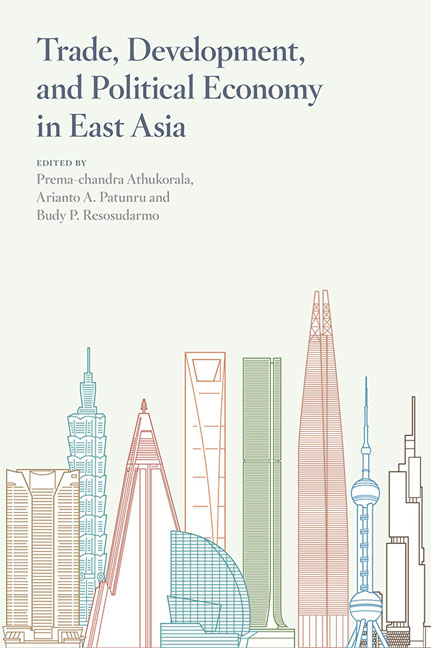Book contents
- Frontmatter
- Contents
- Tables
- Figures
- Contributors
- Foreword
- Acknowledgments
- Glossary
- 1 Introduction
- PART 1 TRADE
- PART 2 DEVELOPMENT
- 5 Economic relations between China, India and Southeast Asia: coping with threats and opportunities
- 6 Revisiting the growth acceleration episodes of Indonesia and India: a political economy reading
- 7 Exporting, education, and wage differentials between foreign multinationals and local plants in Indonesian and Malaysian manufacturing
- 8 Indonesia: returns to occupation, education, and ability during a resource export boom
- 9 Labour market regulation and employment during the Yudhoyono years in Indonesia
- 10 Vietnam: trapped on the trail of the tigers?
- PART 3 POLITICAL ECONOMY
- References
- Index
6 - Revisiting the growth acceleration episodes of Indonesia and India: a political economy reading
from PART 2 - DEVELOPMENT
Published online by Cambridge University Press: 19 May 2017
- Frontmatter
- Contents
- Tables
- Figures
- Contributors
- Foreword
- Acknowledgments
- Glossary
- 1 Introduction
- PART 1 TRADE
- PART 2 DEVELOPMENT
- 5 Economic relations between China, India and Southeast Asia: coping with threats and opportunities
- 6 Revisiting the growth acceleration episodes of Indonesia and India: a political economy reading
- 7 Exporting, education, and wage differentials between foreign multinationals and local plants in Indonesian and Malaysian manufacturing
- 8 Indonesia: returns to occupation, education, and ability during a resource export boom
- 9 Labour market regulation and employment during the Yudhoyono years in Indonesia
- 10 Vietnam: trapped on the trail of the tigers?
- PART 3 POLITICAL ECONOMY
- References
- Index
Summary
INTRODUCTION
Indonesia and India are the world's most populous nations, and are known for their diverse ethnic, linguistic, and religious mix (Nehru 2013). Apart from population and ethnic diversity, they also share one other important attribute—both countries witnessed rapid economic growth for well over a decade, and are seen as growth successes, at least for a part of their recent history (Indonesia for 1967–1996 and India for 1993–2010). Rapid, sustained economic growth is not a feature we witness in many developing countries—in fact, the Commission for Growth and Development (2008) finds that only ten countries from the developing world have experienced sustained growth in the post-World War II period: Botswana, Brazil, China, Hong Kong, Indonesia, Korea, Malaysia, Singapore, Taiwan, and Thailand. India would be added to this list if more recent growth data were available. What is also common to the growth experiences of Indonesia and India is that the period of rapid economic growth came to an end—in 1996 for Indonesia and in 2010 for India.
This chapter examines whether there were common causes for the end of rapid growth in these two very disparate countries. It does so by situating the growth experiences of these two countries within a wider understanding of the nature of economic growth in developing countries. In recent years, there has been a realisation that the emphasis in the previous growth empirics literature on long-run growth or levels of income is not compatible with the ‘stylised facts’ of economic growth (Pritchett 2000). Massive discrete changes in growth are common in developing countries, and most developing countries experience distinct growth episodes: growth accelerations and decelerations or collapses (Jerzmanowski 2006). If this is the case, it is not surprising that Indonesia and India had rapid growth episodes that eventually came to an end. While the East Asian financial crisis is seen as the catalyst for the end of rapid growth in Indonesia, and the ‘policy paralysis’ of the ruling government and the global slowdown are seen as the proximate causes of the growth slowdown in India, we argue in this chapter that there are deeper institutional factors that can explain the end of the rapid growth episodes in these two countries that are broadly similar.
- Type
- Chapter
- Information
- Trade, Development, and Political Economy in East AsiaEssays in Honour of Hal Hill, pp. 90 - 111Publisher: ISEAS–Yusof Ishak InstitutePrint publication year: 2014

